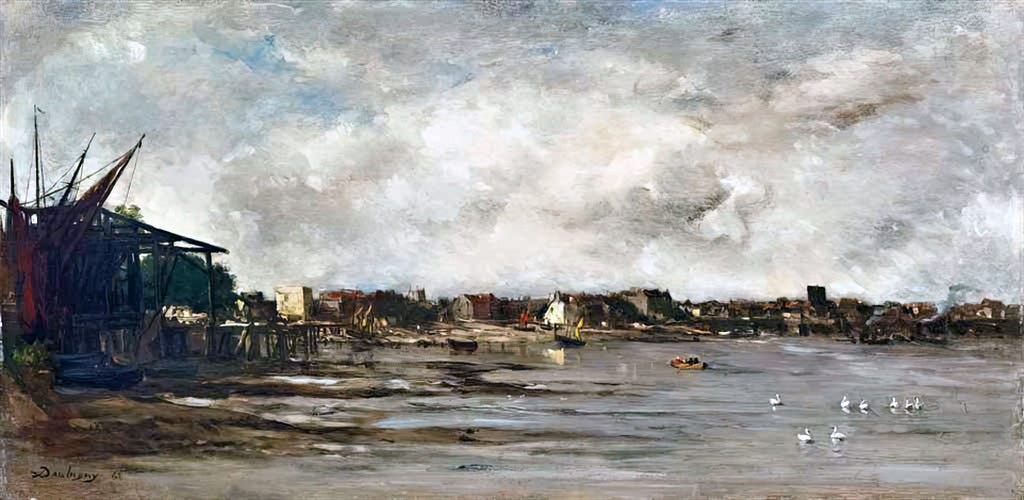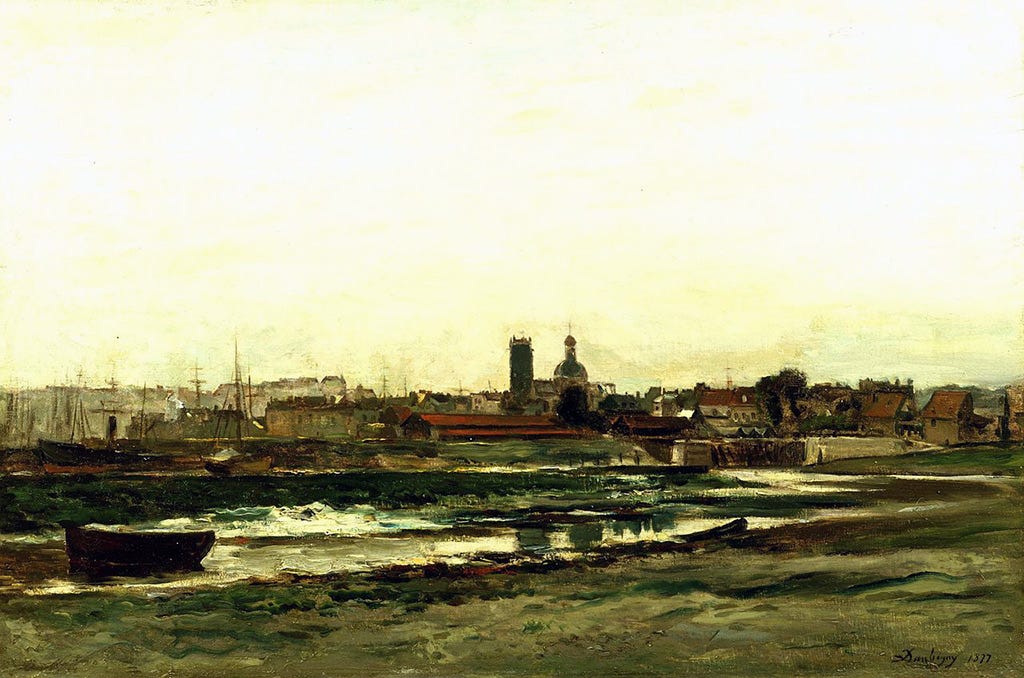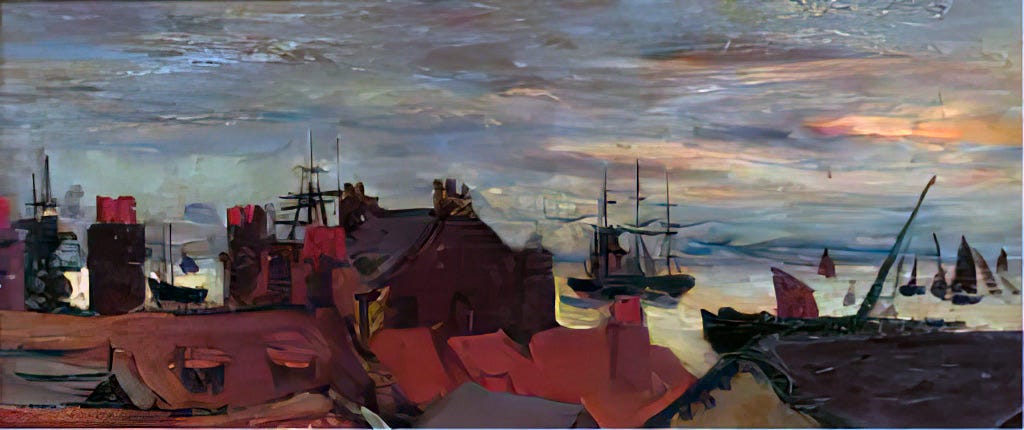Charles-François Daubigny (1817 – 1878) was a French painter and one of the painters of the Barbizon school, and is considered an important precursor of Impressionism. He was known for his landscapes and was a part of the movement that shifted from formalized and classical presentations of landscapes to a more realistic and personal approach.
His work captures the beauty of nature in a serene and almost poetic manner, often focusing on the reflections of light on water and the tranquil scenes of the French countryside. Daubigny was particularly fascinated with rivers and often depicted the banks of the Seine and the Oise.
Throughout his career, Daubigny explored a variety of techniques, including painting en plein air (outdoors), which allowed him to capture ephemeral moments of light and atmosphere. This approach had a significant influence on the later Impressionists, who took many cues from Daubigny's work.
His paintings are characterized by their loose brushwork and light color palette, which together create a sense of the fleeting nature of the scenes he depicted.
These were the paintings that Daubigny made in Dieppe that we were able to find.








